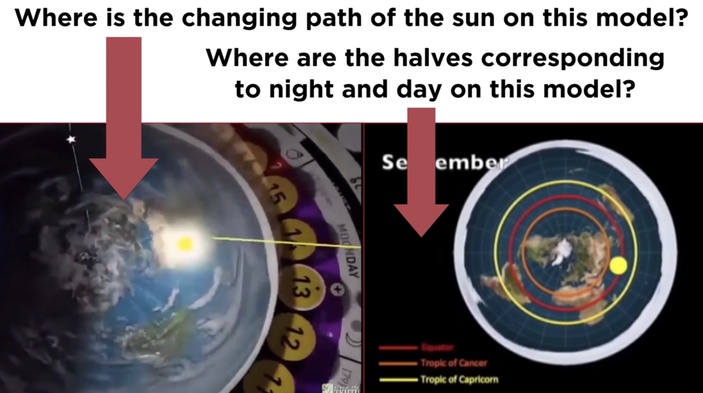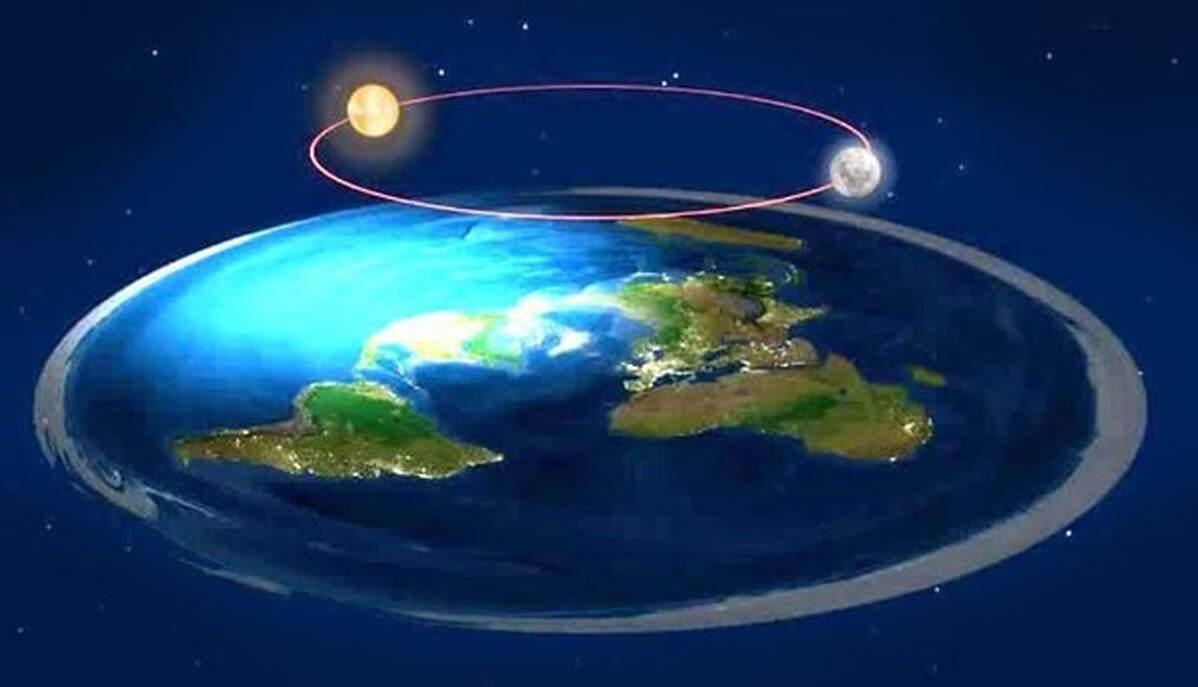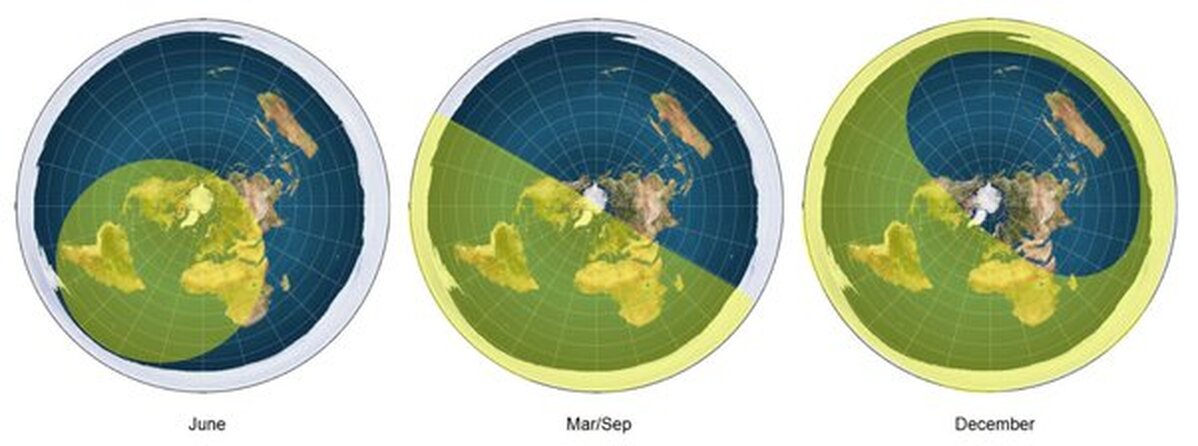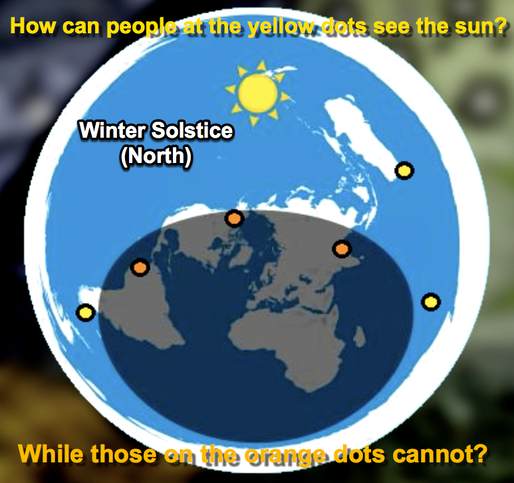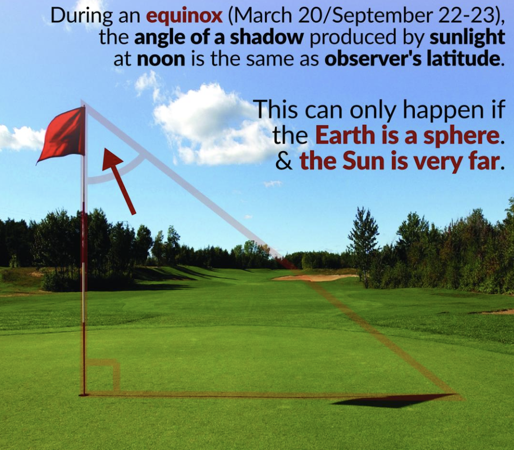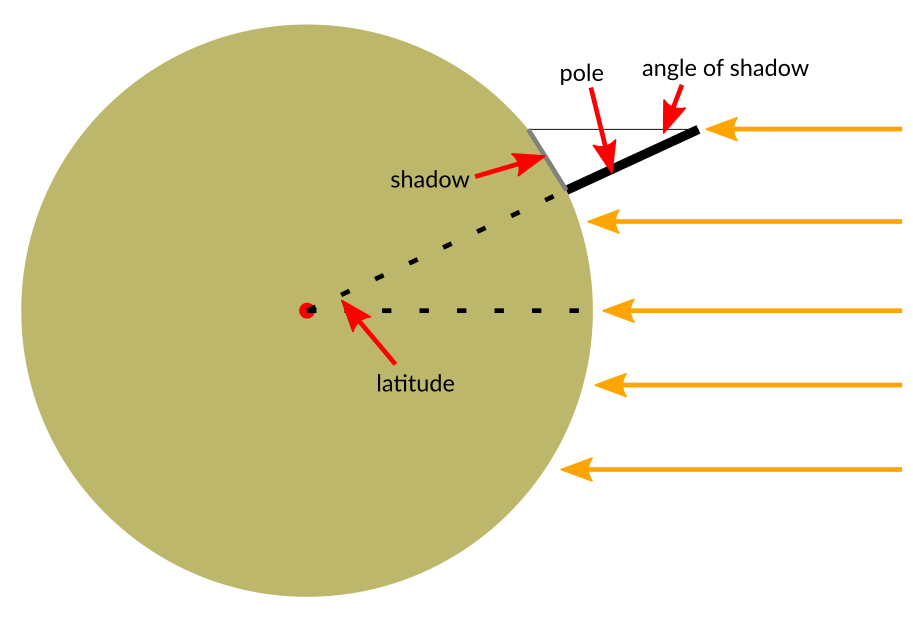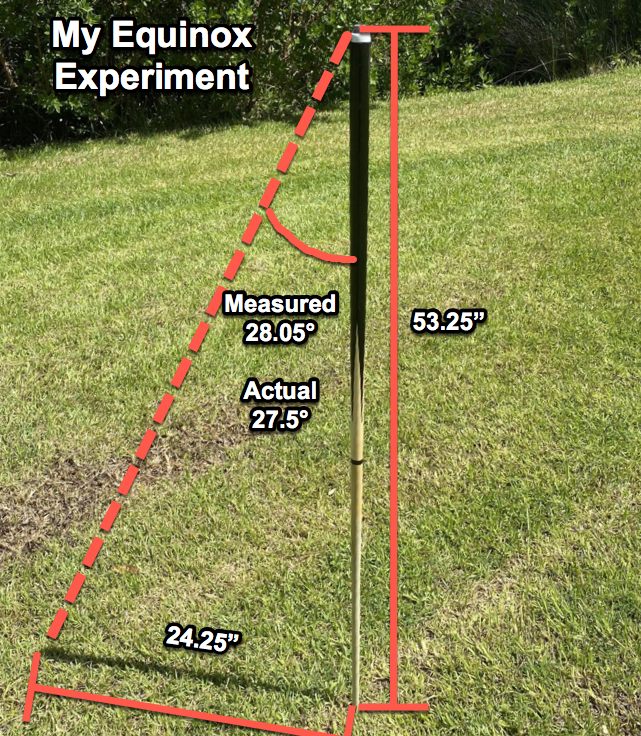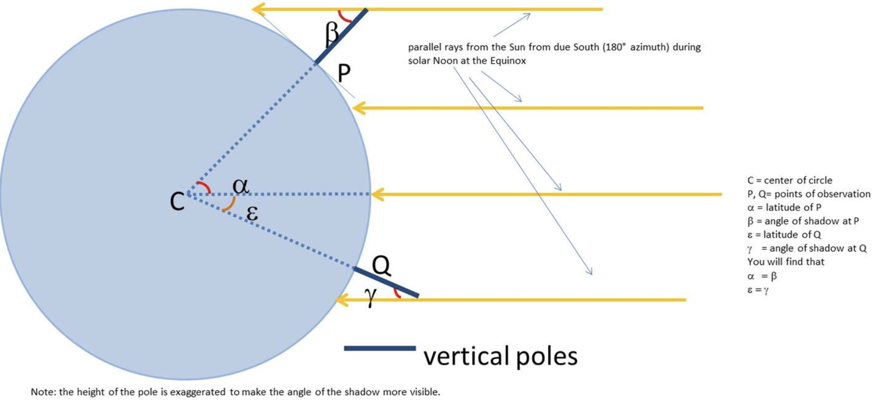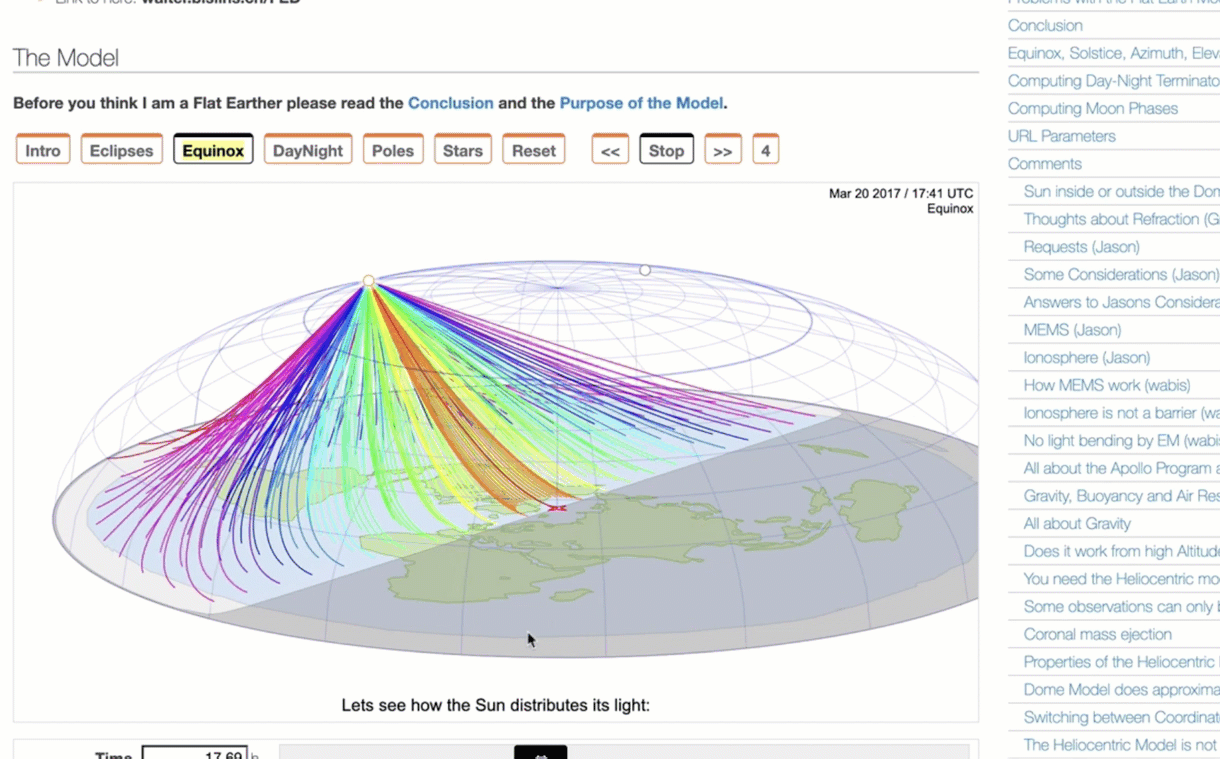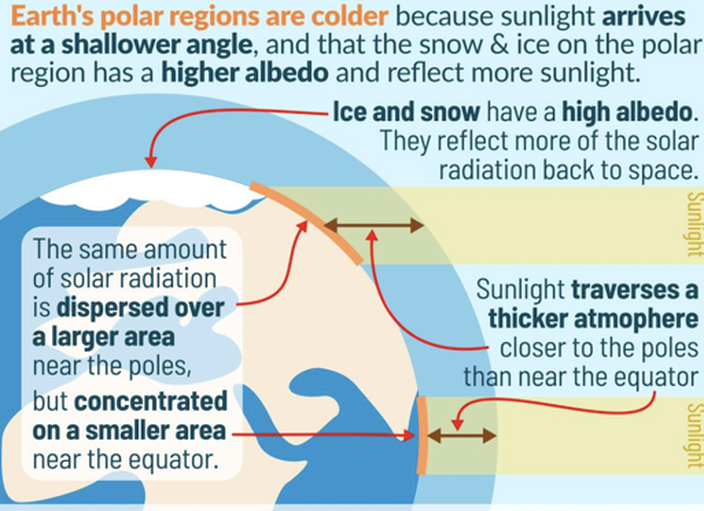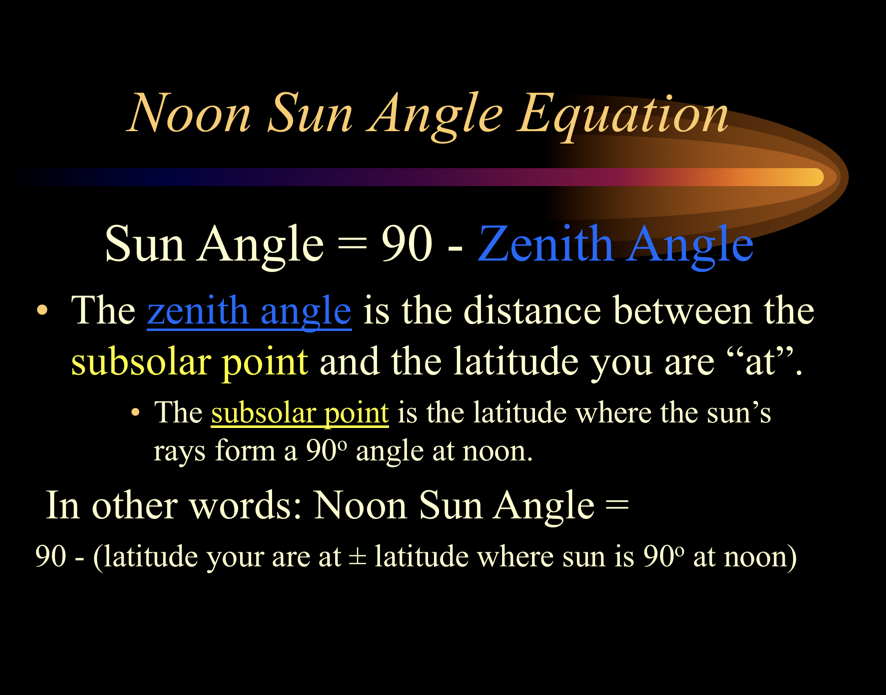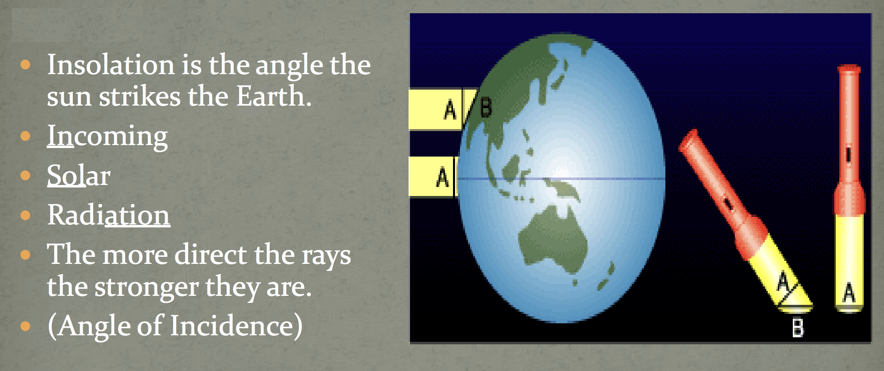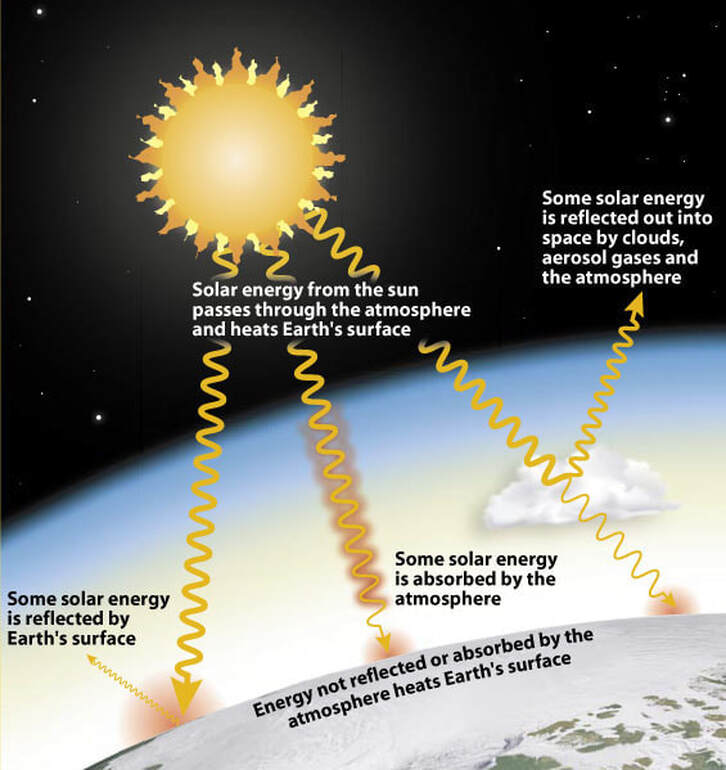First off, you cannot explain seasons with varying concentric circles describing the suns path? Why? First off, that would mean the sun would need to move faster in the winter in the Northen Hemisphere than the summer and it most CERTAINLY cannot do this. Makes no sense.
Worse if the summer has closer circles HOW does the light stay on the day side but NOT the night? It cannot on a flat earth at any radius, but in their model for the summer, it is absurd!!
And herein lies the problem with the flat earth model... There is NOT ONE! They cannot even describe these simple two phenomenon with the same model, not to mention dozens of more phenomenon we'll explore. The spinning spherical heliocentric model has NO PROBLEM explaining this and everything else.
Worse if the summer has closer circles HOW does the light stay on the day side but NOT the night? It cannot on a flat earth at any radius, but in their model for the summer, it is absurd!!
And herein lies the problem with the flat earth model... There is NOT ONE! They cannot even describe these simple two phenomenon with the same model, not to mention dozens of more phenomenon we'll explore. The spinning spherical heliocentric model has NO PROBLEM explaining this and everything else.
how? How? HOW?
We can see than the shape of the sun light on earth is different depending on the month. In June, the sun is nearer to the north pole and shines in perfect circle on earth giving longer daytime to the northern part. This is probably what is referred to as "spotlight" by some FEers. But in March or September, the sun doesn't shine like a spotlight anymore. In December, it's getting worse. I cannot even find a word to describe how the sun can light the outermost of the disk while creating a dark spot in the middle.
How can a spotlight Sun change its “beam” into these impossible configurations? When the Sun is supposedly over the Tropic of Capricorn for the December solstice, it would have to somehow shine on the entire perimeter of the flat Earth (midnight Sun in Antarctica) while leaving a dark spot where its night. Very un-spotlight like, if you ask me!
We can see than the shape of the sun light on earth is different depending on the month. In June, the sun is nearer to the north pole and shines in perfect circle on earth giving longer daytime to the northern part. This is probably what is referred to as "spotlight" by some FEers. But in March or September, the sun doesn't shine like a spotlight anymore. In December, it's getting worse. I cannot even find a word to describe how the sun can light the outermost of the disk while creating a dark spot in the middle.
How can a spotlight Sun change its “beam” into these impossible configurations? When the Sun is supposedly over the Tropic of Capricorn for the December solstice, it would have to somehow shine on the entire perimeter of the flat Earth (midnight Sun in Antarctica) while leaving a dark spot where its night. Very un-spotlight like, if you ask me!
The sunlight pattern becomes an impossible anti-Sun in the Winter:
A tool like suncalc.org can tell us where the sun should be and we can confirm these light patterns on a flat earth map. How can you explain this? It is nonsensical!
Why do we have illumination patterns same at sunrise and sunset.
The known and empirical illumination patterns fit perfectly with an orbiting globe tilted at 23.5 degrees.
Why do we have illumination patterns same at sunrise and sunset.
The known and empirical illumination patterns fit perfectly with an orbiting globe tilted at 23.5 degrees.
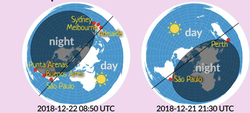
If we were to observe the direction to the Sun over the entire course of the day, on multiple locations on Earth’s surface, and then plot the results on the so-called flat-Earth map; then they would not consistently point to the position of the Sun that is calculated from its location on such map.
This fact happens because the flat-Earth map is not the correct description of the real Earth.
These discrepancies are evident in sunrises and sunsets. The observed directions to the sun almost never point to the correct location of the Sun on the flat-Earth model.
Around solstices, we can see extreme cases of such discrepancies: the directions to the Sun, at some point, would point to the opposite from the location of the Sun according to such map.
The flat-Earth model fails to describe simple facts we encounter every day, like the position of the Sun. On the other hand, the globe model of the Earth is 100% consistent with observation.
Can anyone explain how a sun that is in orbit relatively low above the flat earth perform this exact very complex lighting of the earth that is gradually changing throughout the year in very complex ways? It is complex because you are casting 3D lighting and shadows on a 2D flat earth (the real truth).
This fact happens because the flat-Earth map is not the correct description of the real Earth.
These discrepancies are evident in sunrises and sunsets. The observed directions to the sun almost never point to the correct location of the Sun on the flat-Earth model.
Around solstices, we can see extreme cases of such discrepancies: the directions to the Sun, at some point, would point to the opposite from the location of the Sun according to such map.
The flat-Earth model fails to describe simple facts we encounter every day, like the position of the Sun. On the other hand, the globe model of the Earth is 100% consistent with observation.
Can anyone explain how a sun that is in orbit relatively low above the flat earth perform this exact very complex lighting of the earth that is gradually changing throughout the year in very complex ways? It is complex because you are casting 3D lighting and shadows on a 2D flat earth (the real truth).
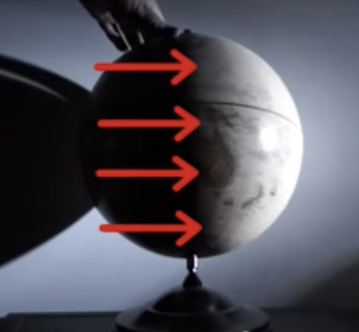
Why on the vernal and autumnal equinoxes does the sun rise exactly due East and it set exactly due West EVERYWHERE on earth?? (impossible on a flat earth)
The Equinox Sun Experiment
Simple experiment anyone can do, anywhere in the world.
At a precise moment each September, usually on the 22nd or 23rd, the sun is directly above the equator, marking the autumnal equinox in the Northern Hemisphere. This year it is 3:20 PM EST!
Equinox = equal night and along with solstices mark the changing of seasons as the earth travels around the sun. The change of seasons is caused by the tilt in the earth's axis.
There are two equnoxes, the autumnal equinox and the vernal equinox.
---
Every vernal and autumnal equinox the sun rises and sets exactly due east and west, no matter where you are on the earth. This is due to the spherical shape of the earth and the earth's tilt. At the equinoxes the earth's tilt is sideways with respect to the sun.
There are two moments in the year when the sun is right above the equator: around March 20 and September 20. At these moments, all over Earth, the sun rises exactly due East, and sets exactly due West. Barring some adjustments for the definitions of dawn and dusk, day and night are equal at 12 hours each.
The Equinox Sun Experiment
Simple experiment anyone can do, anywhere in the world.
At a precise moment each September, usually on the 22nd or 23rd, the sun is directly above the equator, marking the autumnal equinox in the Northern Hemisphere. This year it is 3:20 PM EST!
Equinox = equal night and along with solstices mark the changing of seasons as the earth travels around the sun. The change of seasons is caused by the tilt in the earth's axis.
There are two equnoxes, the autumnal equinox and the vernal equinox.
---
Every vernal and autumnal equinox the sun rises and sets exactly due east and west, no matter where you are on the earth. This is due to the spherical shape of the earth and the earth's tilt. At the equinoxes the earth's tilt is sideways with respect to the sun.
There are two moments in the year when the sun is right above the equator: around March 20 and September 20. At these moments, all over Earth, the sun rises exactly due East, and sets exactly due West. Barring some adjustments for the definitions of dawn and dusk, day and night are equal at 12 hours each.
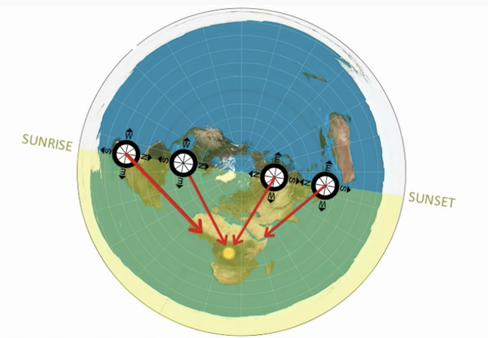
The rest of the year the sun will rise or set a bit to the North or South due to the earths tilt toward or away from the sun.
A good way to test this is to find a street that runs due East and West. You can see the sun rise on earthward on these streets and set westward (again, everywhere on EARTH). Why this works, with globe light. As we rotate across the globe viewers of the same longitude cross into sunlight at the same time.
This is NOT what would happen on a Flat earth because the further South you are, the further North the sunrise would appear all the time, including at equinox.
This is not what we see in reality, there is no way to make an equinox sun work on a flat earth model.
The flat earth model does not fit the reality in which we live.
Only a spinning, sun orbiting sphere explains all these observations.
A good way to test this is to find a street that runs due East and West. You can see the sun rise on earthward on these streets and set westward (again, everywhere on EARTH). Why this works, with globe light. As we rotate across the globe viewers of the same longitude cross into sunlight at the same time.
This is NOT what would happen on a Flat earth because the further South you are, the further North the sunrise would appear all the time, including at equinox.
This is not what we see in reality, there is no way to make an equinox sun work on a flat earth model.
The flat earth model does not fit the reality in which we live.
Only a spinning, sun orbiting sphere explains all these observations.
During an equinox (March 20 and September 22-23), the Sun is directly above the equator. If we are on the equator, an upright stick will not have a shadow in the middle of the day.
On any other location, the angle between the stick and the direction of sunlight will be the same as the observer’s latitude.
This fact can only occur if the Earth is a sphere, and only if the Sun is very far relative to the size of the Earth. So it shows both a spherical earth AND distant sun!
I did this experiment and here in Bradenton Florida, the Sun was at its Zenith on 1:22 pm EST.
I level the pole and the ground was level too over the spot. The pole is 53.25 inches, the shadow was 24.25 inches.
Angle = tan (opp/adj) = tan (24.25/53.25) = 28.05 degrees.
Actual Latitude of Bradenton Fl = 27.5 degrees North.
Close considering I don't have an accurate sundial type of device (Next time I will!).
Cat Cat Yue in Hong Kong Repeated the Same Experiment and posted her results.
On any other location, the angle between the stick and the direction of sunlight will be the same as the observer’s latitude.
This fact can only occur if the Earth is a sphere, and only if the Sun is very far relative to the size of the Earth. So it shows both a spherical earth AND distant sun!
I did this experiment and here in Bradenton Florida, the Sun was at its Zenith on 1:22 pm EST.
I level the pole and the ground was level too over the spot. The pole is 53.25 inches, the shadow was 24.25 inches.
Angle = tan (opp/adj) = tan (24.25/53.25) = 28.05 degrees.
Actual Latitude of Bradenton Fl = 27.5 degrees North.
Close considering I don't have an accurate sundial type of device (Next time I will!).
Cat Cat Yue in Hong Kong Repeated the Same Experiment and posted her results.
NOTE: This won't work on the flat earth poles. It will work close to the equator, but gets less and less accurate as you go toward either pole.
On the globe the sun rays will be parallel at the Poles which means an infinite angle. Easier to think just South or North of both Poles. There the angles will be 89 degrees ++. A VERY long shadow.
On the flat earth, you would need an infinite plane to get far enough away to create such angles at the flat earth North and South Pole. Impossible. You can use any flat earth map and place the flat earth sun at the equator. The shadow will ALWAYS be much much less than 90 degrees! Get it? The problem is you cannot get anywhere near parallel rays at the poles unless the sun was literally in the clouds. But that brings a huge laundry list of other problems.
On the globe the sun rays will be parallel at the Poles which means an infinite angle. Easier to think just South or North of both Poles. There the angles will be 89 degrees ++. A VERY long shadow.
On the flat earth, you would need an infinite plane to get far enough away to create such angles at the flat earth North and South Pole. Impossible. You can use any flat earth map and place the flat earth sun at the equator. The shadow will ALWAYS be much much less than 90 degrees! Get it? The problem is you cannot get anywhere near parallel rays at the poles unless the sun was literally in the clouds. But that brings a huge laundry list of other problems.
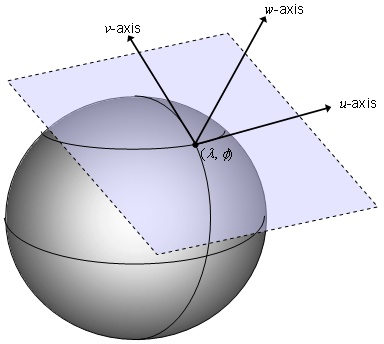
**Flat earth Google Maps Description Debunked**
While it is true those are great circle routes starting due east from points on the longitude and meeting at a point on the equator. But that point on the equator is the sun's sub-solar point (where the sun follows a 90 degree path overhead). It is most definitely NOT where the sun is! The sun is not on the surface of the earth!!
If you want to do this to scale, you need to use MUCH MUCH MUCH longer lines that go way off the camera like miles away.
Do that and they will all be parallel and will accurately represent the sun's rays at sunrise for all those points.
The surface great circle routes are just wrong! See attached for accurate image.
YOUR LINE OF SIGHT TO THE SUN DOES NOT FOLLOW THE SURFACE OF THE EARTH!!
It is away from the surface into space!
You do understand that when you see a sunset, you are looking directly at the Sun, not some place on the ground 1/4 of the way around the globe, right? Put a light very far from the globe, set the globe as it would be on an equinox, and take those strings directly from the line of longitude that is at the terminator line, and run them directly to the light source where we look in reality at sunset. They will all be parallel and all will be due east, as in reality b
While it is true those are great circle routes starting due east from points on the longitude and meeting at a point on the equator. But that point on the equator is the sun's sub-solar point (where the sun follows a 90 degree path overhead). It is most definitely NOT where the sun is! The sun is not on the surface of the earth!!
If you want to do this to scale, you need to use MUCH MUCH MUCH longer lines that go way off the camera like miles away.
Do that and they will all be parallel and will accurately represent the sun's rays at sunrise for all those points.
The surface great circle routes are just wrong! See attached for accurate image.
YOUR LINE OF SIGHT TO THE SUN DOES NOT FOLLOW THE SURFACE OF THE EARTH!!
It is away from the surface into space!
You do understand that when you see a sunset, you are looking directly at the Sun, not some place on the ground 1/4 of the way around the globe, right? Put a light very far from the globe, set the globe as it would be on an equinox, and take those strings directly from the line of longitude that is at the terminator line, and run them directly to the light source where we look in reality at sunset. They will all be parallel and all will be due east, as in reality b
Look at the animation below from Walter Bislin's model of the equinox on a flat earth. Notice the light has to take ridiculous refraction paths near the edge or ice wall. The upper max for atmospheric refraction is around .58 which is nowhere near what is needed. We would literally have to be living in solid glass to get these kind of ridiculous refractions angles which is why flat earthers will use glass in their little home made experiments.
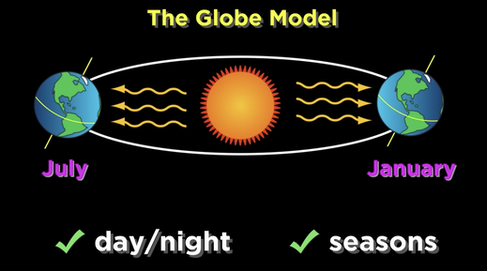
We all experience night and day, alternating periods of light and dark that change over time. We can see the ecliptic. This is the part of the sky that traces the sun's path throughout the year as well as the paths of all the planets. The path of the sun follows a slowly tilting pattern that lasts one year. One year also outlines the seasons. These seasons go a particular way in the Northern Hemisphere and the opposite way in the Southern Hemisphere.
Why do the seasons change?
This a question with a very well understood answer you are likely familiar with. As the earth rotates while orbiting the sun at any given time, half of the earth is going to be facing the sunlight, while the other half is facing the darkness of space, hence night and day.
But the axis of the earth's rotation is at an angle, which is approximately 23.5 degrees. This angle is the direct cause of our seasonal changes. As the earth orbits the sun for half the year, half the trip, the axis of rotation is going to be more pointed towards the sun in the Northern hemisphere and pointing away from the sun in the Southern Hemisphere.
The Northern hemisphere receives more daylight hours in the summer than the winter and is most extreme on the summer solstice. Also because the earth is receiving more sunlight energy in the summer temperatures tend to be warmer.
It is opposite for the winter, with the axis pointed away from the sun.
If you follow that then you would understand the exact opposite would be happening in the Southern Hemisphere
This a question with a very well understood answer you are likely familiar with. As the earth rotates while orbiting the sun at any given time, half of the earth is going to be facing the sunlight, while the other half is facing the darkness of space, hence night and day.
But the axis of the earth's rotation is at an angle, which is approximately 23.5 degrees. This angle is the direct cause of our seasonal changes. As the earth orbits the sun for half the year, half the trip, the axis of rotation is going to be more pointed towards the sun in the Northern hemisphere and pointing away from the sun in the Southern Hemisphere.
The Northern hemisphere receives more daylight hours in the summer than the winter and is most extreme on the summer solstice. Also because the earth is receiving more sunlight energy in the summer temperatures tend to be warmer.
It is opposite for the winter, with the axis pointed away from the sun.
If you follow that then you would understand the exact opposite would be happening in the Southern Hemisphere
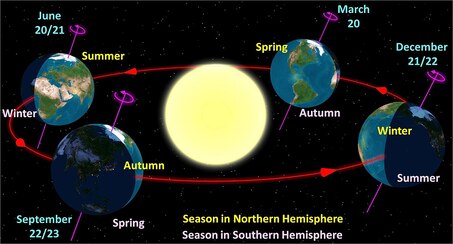
The Globe Model CAN EASILY Explain Day, Night and the seasons (and simultaneously!!).
How can we see the sun and moon at the same time.
If the sun is the source of heat, why doesn't it get hotter as you move towards it.
This ball spins so the half facing the sun is day and the other half is night. Shine a light at a sphere and you can see it illuminates exactly half. This is impossible with the spotlight sun on a flat earth!! As it goes around the sun, the hemisphere experiencing more direct sunlight experiences summer. The hemisphere experiencing less direct sunlight experiences winter. And it does not correlate with the distance from the sun, it is energy per unit area which means angle relative to the sun is more important here than distance.
And there it is , both day and night are explained immaculately and simultaneously with the heliocentric globe model!
WE COULD STOP HERE, BECAUSE FLAT EARTH CANNOT EXPLAIN THESE TWO VERY BASIC OBSERVATIONS LIVING ON PLANET EARTH!
How can we see the sun and moon at the same time.
If the sun is the source of heat, why doesn't it get hotter as you move towards it.
This ball spins so the half facing the sun is day and the other half is night. Shine a light at a sphere and you can see it illuminates exactly half. This is impossible with the spotlight sun on a flat earth!! As it goes around the sun, the hemisphere experiencing more direct sunlight experiences summer. The hemisphere experiencing less direct sunlight experiences winter. And it does not correlate with the distance from the sun, it is energy per unit area which means angle relative to the sun is more important here than distance.
And there it is , both day and night are explained immaculately and simultaneously with the heliocentric globe model!
WE COULD STOP HERE, BECAUSE FLAT EARTH CANNOT EXPLAIN THESE TWO VERY BASIC OBSERVATIONS LIVING ON PLANET EARTH!
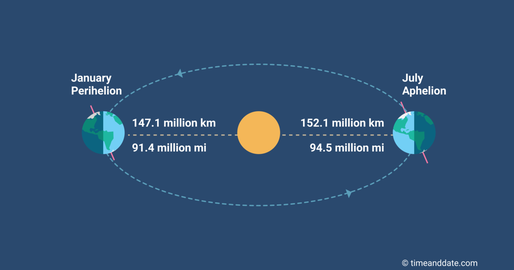
Flux density over the whole Earth varies from about 1408 W/m2 at perihelion (early January) to 1314 W/m2 at aphelion (early July). So, the planet receives about 7% more energy at perihelion compared to aphelion.3
Take the Summer on the tropic of Cancer. Since the sun is directly overhead the sin 90 = 1. So even though the sun is 3 million miles further away, it gets 100% incident irradiance = 1314 W/M^2.
But a typical difference between summer and winter incident angles/normal angles is 46 degrees, which means incoming sun in winter on the tropic of Cancer would be sin 44 = .695 * 1408 = 978.13.
As you can see, 1314 mW/m^2 > 978 mW/m^2
These angles can be calculated from the difference in your latitude to the subsolar point. The subsolar point is the latitude where the sun's rays form a 90 degree angle at noon.
That is , even though the sun is 3 million miles further in the summer than the winter, because of the incident angle, the irradiance is 34 percent more! And not just that but the earth and atmosphere will heat up more too and store more energy!
In optics, the value of radiated flux crossing a surface, thus the average Poynting vector component in the direction normal to that surface, is technically known as the irradiance, more often simply referred to as the intensity (a somewhat ambiguous term).
Take the Summer on the tropic of Cancer. Since the sun is directly overhead the sin 90 = 1. So even though the sun is 3 million miles further away, it gets 100% incident irradiance = 1314 W/M^2.
But a typical difference between summer and winter incident angles/normal angles is 46 degrees, which means incoming sun in winter on the tropic of Cancer would be sin 44 = .695 * 1408 = 978.13.
As you can see, 1314 mW/m^2 > 978 mW/m^2
These angles can be calculated from the difference in your latitude to the subsolar point. The subsolar point is the latitude where the sun's rays form a 90 degree angle at noon.
That is , even though the sun is 3 million miles further in the summer than the winter, because of the incident angle, the irradiance is 34 percent more! And not just that but the earth and atmosphere will heat up more too and store more energy!
In optics, the value of radiated flux crossing a surface, thus the average Poynting vector component in the direction normal to that surface, is technically known as the irradiance, more often simply referred to as the intensity (a somewhat ambiguous term).
Earth Re-radiates Infrared
The other reason is that the air is very transparent to short wavelength radiation from the Sun but not the longer wavelength radiation emitted by the warm Earth.
Specific Heat much higher water than land
Atmosphere holds heat
Reason you stay warmer with shower door closed
The other reason is that the air is very transparent to short wavelength radiation from the Sun but not the longer wavelength radiation emitted by the warm Earth.
Specific Heat much higher water than land
Atmosphere holds heat
Reason you stay warmer with shower door closed
Solar Panels in the Winter:
Actually they INCREASE in efficiency.
Shorter days - Winter days are significantly shorter than Summer days. This means that the solar system will be running for less time each day and therefore produce less average energy per day.
The angle of the sun - Compounding the effect of the shorter days is the fact that the sun angle changes dramatically in the winter as well. The sun, even at its peak around midday, is much lower in the sky during the winter months. For most residential rooftops this means that the sun’s rays will be hitting the solar panels less directly than during the summer months. This will cause the system’s power output to be lower which also has a direct impact on energy production.
Atmospheric conditions - Not only do the winter months provide plenty of stormy weather and cloud cover, but the effect of snow cover on the panels after a storm is significant as well. With a thin covering of snow, the system will often still be able to turn on and output a small amount of energy. Larger snow accumulations on the panels, however, can keep the system from converting energy for up to a few days until the panels clear.
Actually they INCREASE in efficiency.
Shorter days - Winter days are significantly shorter than Summer days. This means that the solar system will be running for less time each day and therefore produce less average energy per day.
The angle of the sun - Compounding the effect of the shorter days is the fact that the sun angle changes dramatically in the winter as well. The sun, even at its peak around midday, is much lower in the sky during the winter months. For most residential rooftops this means that the sun’s rays will be hitting the solar panels less directly than during the summer months. This will cause the system’s power output to be lower which also has a direct impact on energy production.
Atmospheric conditions - Not only do the winter months provide plenty of stormy weather and cloud cover, but the effect of snow cover on the panels after a storm is significant as well. With a thin covering of snow, the system will often still be able to turn on and output a small amount of energy. Larger snow accumulations on the panels, however, can keep the system from converting energy for up to a few days until the panels clear.

